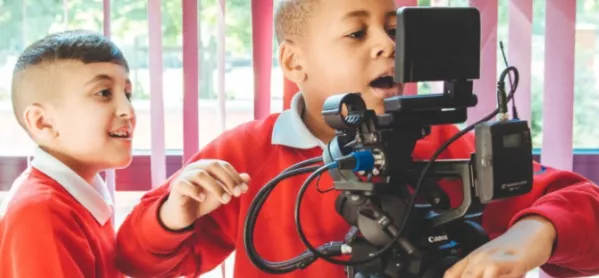4 ways movie making can boost other learning skills

Teaching young pupils how to use video tools such as iMovie is, as I have written previously, something that can - with patience, practice and a plan - be achieved.
The real fun comes, though, when the pupils’ skills are at a suitable level that you can start to get them to put what they have learned into action.
These are just some of the ways I have found that young learners can enjoy the video-making process and what it teaches them along the way.
Movie making: The benefits of teaching pupils to use video tools
1. Make a movie
This is a great way to develop the students’ story-writing skills whilst exposing them to acting and public speaking, too.
Simply put the students in groups and have them write their own short story (about one or two sides of A4 paper. You can either give the students materials such as storyboards and prompts to guide them through the process or you can let them run wild, it is up to you).
Giving them materials tends to speed things up, though, such as story boards and sentence starters to guide them through the process (which typically speeds to process up), or you can let them run wild and navigate this stage themselves, it is up to you.
I usually give the class a storyboard where they can fit in a beginning, middle and an end as I like the sense of structure it adds.
Once written, the students can act out the story, record it and edit it together using their movie editing skills.
The final product will be something they can take home - and maybe even look back on fondly when they are adults.
2. Presentations
Many students struggle with presentation skills; often this is due to standing in front of their peers with the fear of failure.
Having students do their presentations to their camera allows them to retake parts as often as they like. They are also able to watch themselves and see where they can improve.
The presentations can be based on the topic you are teaching; for example, I recently had a group of students deliver presentations on whether zoos were good or bad.
The best thing about delivering presentations through movie editing software is that the students discover that they have the ability to deliver a high-quality final presentation.
Seeing this can boost their confidence and, as I have found, it impacts their presentation skills in a general sense.
3. Historical interviews
This is a great way to get students to learn about prominent figures from history. The students can work in pairs and create questions to ask the person from history. I recently had a student act as Isaac Newton and another as Mary I of England.
Once they have created the question list, they can begin researching the information to answer these questions. You can let them do this on the computer or you could print out resources for the historical figures they are learning about.
Finally, one student will take on the role of interviewer and the other will act as the person from history. They can record this and edit it together using their movie-making savvy.
This is great for boosting their research skills, historical knowledge and working in teams to produce a fun and informative video.
4. Autobiographies
We do not spend enough time reflecting on the great things we have done. Getting students to recognise these is wonderful for their wellbeing, and video can be an ideal way to do this.
Looking back over their past few years, you can ask them to pick out five things they have done that they are proud of, such as finishing a book they found difficult, learning to spell a complicated word or scoring a goal in football.
They can then speak into a camera and record it like a YouTuber or use images to represent each thing and speak over the image. You could even have the students add subtitles, too.
Let the creative juices flow
At the end of the day movie making is a creative endeavour. Giving the students the chance to have a go is a great way to let them flex those creative muscles.
It also doubles up as giving them increased tech skills beyond the basics of PowerPoint.
You may get some very leftfield final productions but that’s half the fun - and how we learn. You never know, one of your students could end up becoming the next Steven Spielberg, all thanks to a bit of time to try out some movie editing magic in your classroom.
Gregory Adam is a primary teacher at Nord Anglia Chinese International School in Shanghai. He released his first book last year, Teaching EFL, ESL & EAL. A Practitioner’s Guide
You need a Tes subscription to read this article
Subscribe now to read this article and get other subscriber-only content:
- Unlimited access to all Tes magazine content
- Exclusive subscriber-only stories
- Award-winning email newsletters
Already a subscriber? Log in
You need a subscription to read this article
Subscribe now to read this article and get other subscriber-only content, including:
- Unlimited access to all Tes magazine content
- Exclusive subscriber-only stories
- Award-winning email newsletters